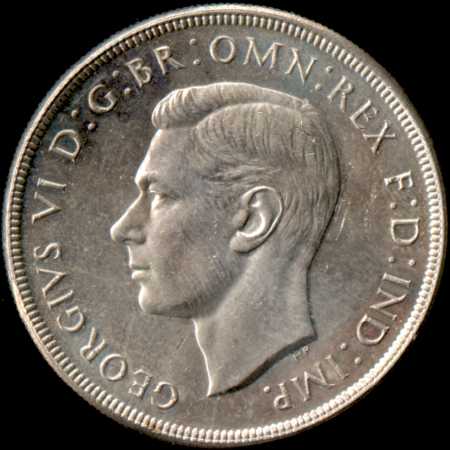
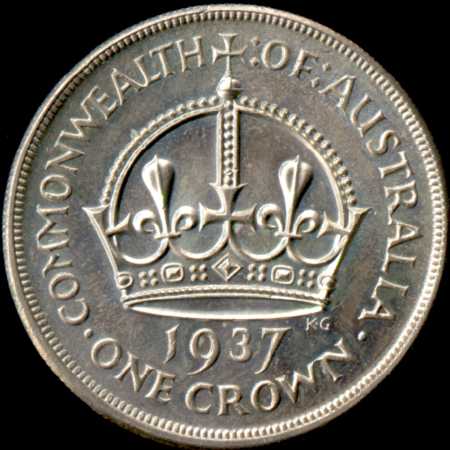

|
|
The five-shilling coin was intended to commemorate the ascension of George VI
to the British throne and as such was supposed to be a single-year issue for 1937
only. Its commemorative value was somewhat diminished when it was re-issued in 1938,
albeit in a smaller quantity.
|
Denomination |
5/- |
|
Composition |
Sterling silver (92.5% silver, 7.5% copper) |
|
Diameter |
38.5mm (1.5") |
|
Weight |
28.27g (1 oz) |
|
Obverse design |
Thomas (Humphrey) Paget |
|
Reverse design |
George (Kruger) Gray |
|
Mint |
Melbourne |
|
Mint mark |
None |
|
Mintage 1937 |
1,008,000 |
|
Mintage 1938 |
101,600 |
 |
Obverse. |
 |
1937 reverse. |
 |
1938 reverse. |
Grading hints
The obverse is typical of the George VI coins and there are no markers specific
to the crowns. The reverse has several features which are worth checking. Note that
the commentary is my personal opinion and may not reflect standards generally in
use.
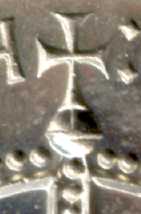 |
1. Orb on top of crown. There is a horizontal rim and a vertical band running from the rim to the base
of the cross. This feature quickly wears flat and its presence is a good indicator
for a truly uncirculated coin. |
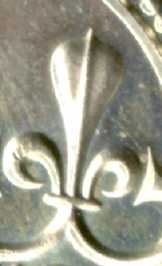 |
2. Large central bulb on Fleurs-de-Lis The bulbs each feature a vertical ridge which should be sharply defined in an
uncirculated coin. In an EF coin the ridge will still be visible but will be somewhat
rounded. VF coins will not show the ridge. |
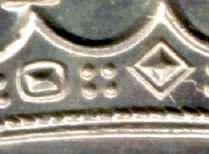 |
3. Jewels in headband In an uncirculated coin these will be sharply-defined. The apex of the square
jewel will be a sharp point and the rectangular jewel will have a sharp ridge. The
"pearls" will not show any hint of flatness. |
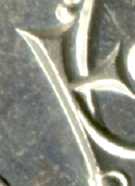 |
4. Struts at the sides of the crown In an uncirculated coin these should have sharp angles. The top surface should
be flat and the corners should not be rounded. |
Various private mints have created replica or "fantasy" crowns featuring
Edward VIII. Here is one. It is features a reverse which is similar to the genuine
crown but not identical. Furthermore the weight is only 20.1g and the edge is plain
rather than reeded. These items have limited numismatic value and are best considered
as curiosities.
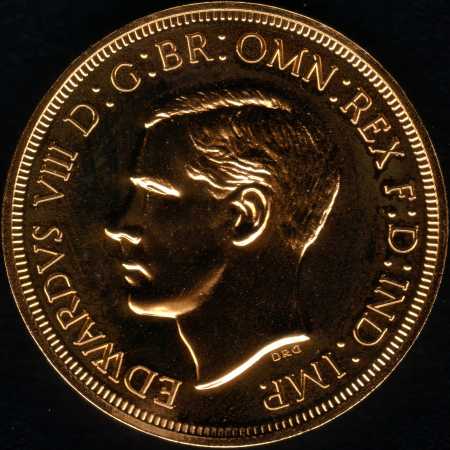 |
Obverse featuring uncrowned head of Edward VIII. Other "coins" were struck
featuring a crowned head. |
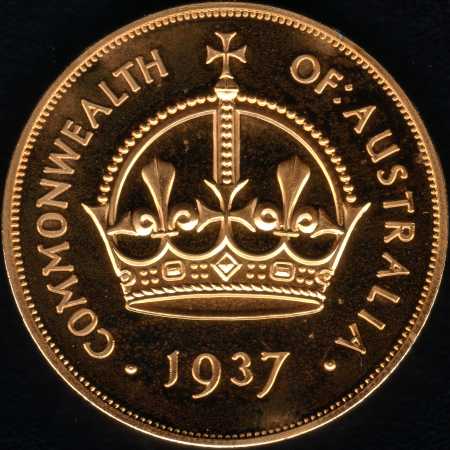 |
The reverse is similar to that on a genuine crown but by no means identical. The
lettering is smaller and the near strut of the crown is much wider. |